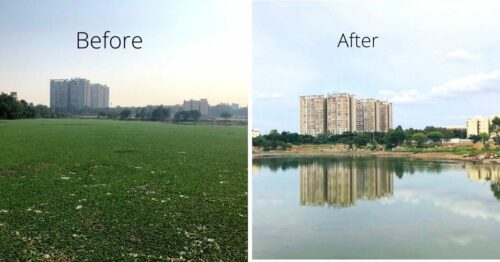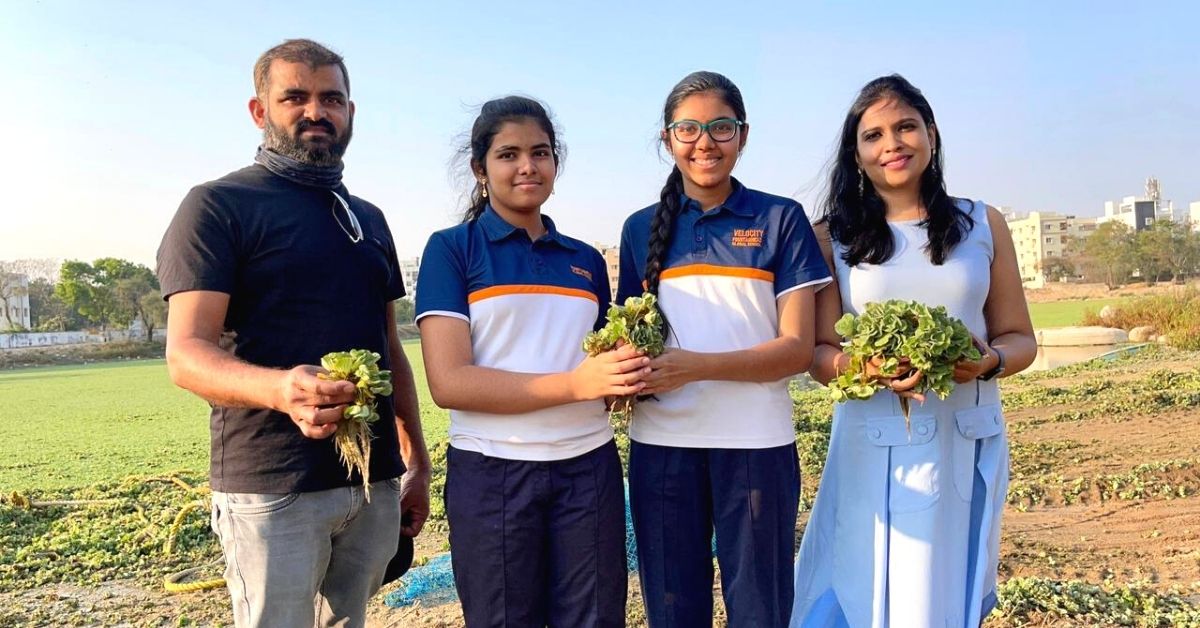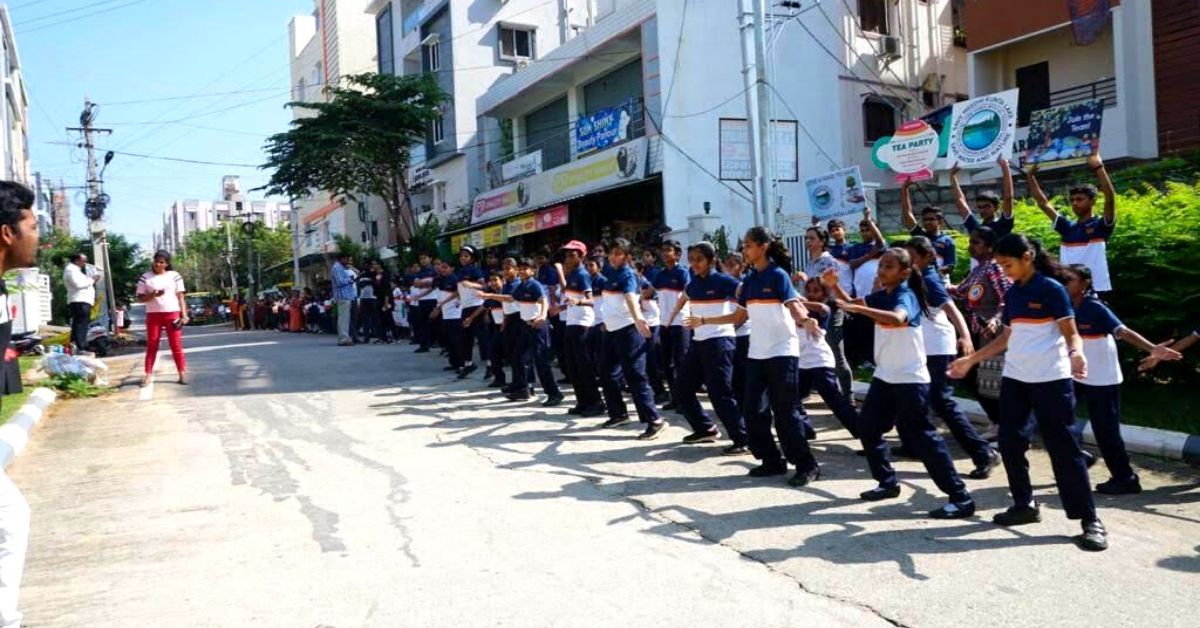Hyderabad : 21/03/2021
Couple Helps 100 Hyderabad Students Revive Deteriorating Lake, Benefit 9000 Locals

Once known as the ‘City of Lakes’, Hyderabad has lost thousands of these water bodies to rapid urbanisation in the past couple of decades – 3,000, to be precise. According to archives belonging to the Nizam era, it once had 60,000 lakes that helped residents meet their drinking water needs and absorb excess water to prevent floods. However, thanks to urbanisation, only 185 lakes remain in the city, and face a constant threat.
However, a school in the city is trying to set an example by reviving the 12-acre Meedi Kunta Lake in Hafeezpet, which has impacted 9,000 residents in the vicinity. It all started in 2019, when Meghana Musunuri, the founder of Fountainhead School, began a conversation on civil rights with students of Class IV and V.
“A discussion was initiated with students to explain citizen rights, and how the kids could play a responsible role in society. The talks led to the realisation that students did not have a sense of ownership towards natural assets such as mountains, lakes, rivers, and others. They felt the responsibility of these assets belonged to the governments,” says Meghana.
She says students were explained that they had rights and duties to protect such resources. “They expressed interest in visiting one of these places. A trip to the nearest Meedi Kunta Lake was planned,” she adds.
No child’s play

However, Meghana visited the lake for inspection before organising a trip for the students. She was appalled by the deteriorating condition of the water body. “The lake was covered with water hyacinth. Rubbish and debris had been dumped along the boundaries. It was practically a dumping ground. There was no walkway, and it was difficult to make way to the lake without navigating the waste,” she recalls.
Disappointed, she returned to the children to disclose that it was difficult to visit a hygienic place. “Instead of being disheartened, the students started giving examples of how they could clean the lake up. Some even cited examples from science books,” she says.
As the kids showed determination, Meghana decided to raise funds, seek permissions and get the clean up work started. “The school raises funds for an orphanage or old-age homes every year. We decided to adopt the lake for that year,” she says, adding, “I thought that if the students participate, they would learn the process and hardships in reviving a lake, and develop a sense of ownership to safeguard the environment.”
The students visited the office of the Greater Hyderabad Municipal Corporation (GHMC) with Meghana to get approvals and started sourcing funds through crowdfunding. “They drafted letters required to seek permissions. About 100 students initiated drives and awareness campaigns, and began approaching residents around the lake for funds. They conducted flash mobs and a marathon for the cause. Over the next few weeks, contributions worth Rs 8 lakh poured in,” she adds.

Smitha Deshaboina has two children studying at the school, and together, they worked to raise Rs 1 lakh. “The water bodies in the city are in poor condition and shrinking due to encroachments. I see lakes around the city turn into dumping grounds, and Meedi Kunta is no exception. When I learned about the initiative, I decided to help my children contribute to the cause and became an active participant myself,” she says.
Meghana says that an estimate for expenses revealed a need for a fund of Rs 2 crore, with the work stretching for about three years. “By August, the students started cleaning the area around the lake and collecting rubbish such as weed, medical waste, construction debris and discarded plastic items. The school hired manual labour to clear the water hyacinth from the lake, and conducted de-siltation. The soil from the lake was used to construct bandhs around the lake and create a walking area,” she explains.
A brand new makeover
The lake area was beautified with native tree species and bamboo. “In the process, we learned that the lake contained enormous quantities of sewage water flowing from the residential houses around it. The water was diverted to the drainage systems and cleaned. The pollution levels were so high that our 11 attempts to introduce fish to the lake failed. The fish died due to low oxygen levels and toxic pollutants,” she adds.
Meghana says that on one occasion, locals raised objections alleging that the school was trying to take control over the lake. “However, due permissions were presented to convince the residents,” she adds.

The revival work included cleaning choked stormwater inlets and deploying purifying techniques to improve the water quality. “My husband, Sridhar Vunnam, who is the director of the school, ensured that work continued during the COVID-19 pandemic,” she says.
In the meantime, the school children raised another Rs 10 lakh. It also sourced funds from the NGO Save Water Organisation, adding a total of Rs 77 lakh.
A cleaner ecosystem
Locals immediately felt the benefit of the revival work. “The deteriorating water body had become a fertile ground for mosquitoes and posed a threat of diseases such as dengue and malaria. But the lake is clean now, and free from these health hazards,” says Anupama Singh, a resident in the area.
Anupama says the lake that was once used for dumping waste now sees visitors in the locality. “No flood water overflows in residential colonies, as the lake’s water carrying capacity has increased. Hopefully, it recharges groundwater levels in coming years,” she adds.
Meghana says the locals feel safe in the area. “The fishermen and house help using the isolated patch around the lake would often be robbed. But the revival has instilled a sense of security in them,” she adds.
No comments:
Post a Comment